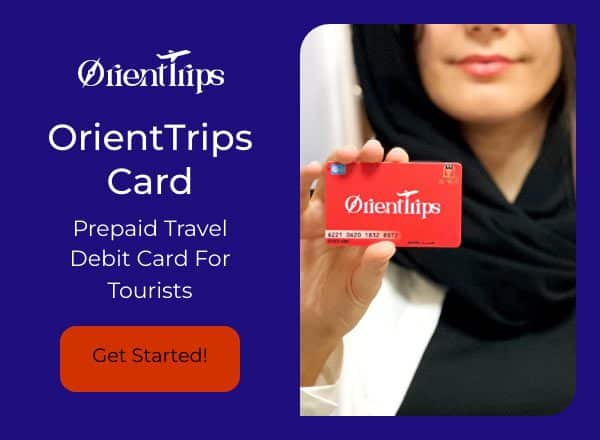Iran Travel Tips And Advice
Journey Through Persia: Essential Tips for a Seamless Iran Travel Experience

Iran stands as a land of contrasts and surprises, a country where ancient history and modern developments converge. This guide, “Iran Travel Tips & Advice,” aims to equip you with all the necessary information to make your journey through Iran, not only memorable but also smooth and hassle-free.
Iran’s landscape is as diverse as its cultural heritage. From the bustling streets of Tehran to the serene deserts of Yazd, every corner of Iran tells a unique story. The country’s history stretches back millennia, evident in its stunning architecture and archaeological sites. The Persepolis ruins, the Nasir al-Mulk Mosque in Shiraz, and the Golestan Palace in Tehran are just a few of the many historical treasures awaiting exploration.
Read More: Iran Travel Guide
Traveling in Iran offers more than a journey through time. It’s an opportunity to experience the warmth and hospitality of the Iranian people. The local cuisine, a delightful fusion of Middle Eastern flavors, promises to be a highlight of your trip. Iranian dishes are not only a feast for the palate but also a reflection of the country’s rich cultural.
Safety and comfort are paramount when traveling. This guide provides detailed advice on navigating Iran’s transportation system, from domestic flights to the convenience of trains and buses. We’ll also guide you through the variety of accommodation options, ensuring you find a place that feels like a home away from home.
Understanding Iran’s cultural norms and etiquette is crucial for a respectful and enjoyable visit. Our section on social customs will help you navigate these nuances with ease. We also cover practical aspects like visa requirements, health tips, and currency advice, ensuring you’re well-prepared before your trip.
Whether you’re an adventurer eager to explore Iran’s natural wonders or a history enthusiast ready to delve into its past, this guide covers it all. We provide insider tips on the best shopping spots, how to stay connected, and how to handle any emergencies, making your travel experience as seamless as possible.
Join us on this journey through Iran, a country rich in history, culture, and natural beauty. “Iran Travel Tips & Advice” is your comprehensive guide to discovering the many facets of this fascinating country. Let’s begin this incredible adventure!
Contents
Before You Go
Preparing for your trip to Iran, a country rich in history and culture, is crucial for a smooth and enjoyable experience. This section, “Before You Go”, guides you through essential preparations. From securing necessary travel documents to understanding local customs, we provide vital tips and advice. Whether it’s your first visit or you’re a seasoned traveler, these steps are essential for a hassle-free journey to Iran. Get ready to embark on an unforgettable adventure with confidence and ease.
Iran Visa Requirements

Before setting foot in Iran, it’s crucial to understand the visa process to ensure a smooth entry. Most nationalities need a visa to enter Iran. You can either apply for a visa at an Iranian consulate or opt for a Visa on Arrival (VOA) at major airports. However, citizens of the United States, Canada, and the United Kingdom must apply in advance and travel with a certified Iran travel guide:.
For more detailed information on how to apply for an Iranian visa, check the OrientTrips Visa Page.
Cultural Norms and Etiquette
Navigating a new culture can be both exciting and challenging. In Iran, understanding the local culture and etiquette is not just a sign of respect but also opens doors to more meaningful interactions and experiences.
Religious Customs and Dress Code
Iran is an Islamic Republic, which makes religious customs and laws integral to everyday life. For travelers, this means adhering to a certain dress code, especially in public and religious places. Women are required to wear a headscarf and dress modestly, covering their arms and legs.
Read More: Iran Dress Code
Loose-fitting tunics or manteaus paired with trousers are often the go-to outfit. Men, too, should avoid wearing shorts and sleeveless shirts, opting instead for long pants and sleeved shirts. These dress codes apply to everyone, regardless of religious or non-religious beliefs, and are strictly enforced.
Taarof: The Art of Iranian Politeness

Another cultural nuance you’ll encounter is Taarof, a Persian form of etiquette deeply embedded in social interactions. Taarof is a system of politeness and indirect communication that can sometimes baffle outsiders. You’ll find it in various situations, from shopping at bazaars to accepting invitations for tea. For example, if someone offers you something, it’s customary to politely decline at least once or twice before accepting. It’s not about playing games; it’s a way to show humility and respect.
Understanding Taarof can seem like a complex task, but once you grasp its essence, it adds a fascinating layer to your experience in Iran. It allows you to engage more deeply with the local culture and often leads to enriching conversations and friendships. In a sense, mastering the art of Taarof is like being handed a key to a more authentic and enjoyable journey.
Respect for Religious and Social Norms
Public displays of affection between opposite sexes are generally frowned upon, and during the Islamic holy month of Ramadan, eating, drinking, or smoking in public during daylight hours is considered disrespectful.
Language Basics: Iran Travel Guide
While Iran has increasingly embraced global languages, particularly English, the official language remains Persian (Farsi). You’ll find that many Iranians, especially the younger generation and those working in tourism, have a decent command of English. However, learning a few essential phrases in Persian can significantly enhance your travel experience.
Essential Farsi (Persian) phrases and words for travelers visiting Iran
| English | Farsi (Persian) |
| Hello | سلام (salaam) |
| Goodbye | خداحافظ (khodaa haafez) |
| Please | لطفاً (lotfan) |
| Thank you | ممنون (mamnoon) |
| Yes | بله (bale) |
| No | نه (na) |
| Excuse me | عذر میخواهم (ozr mikhaaham) |
| Sorry | متاسفانه (motasafaneh) |
| How are you? | حال شما چطور است؟ (haal-e shoma chetor ast?) |
| I don’t understand | نمیفهمم (nemifahmam) |
| Where is…? | …کجاست؟ (…kojast?) |
| How much is this? | این چقدر است؟ (in cheghadr ast?) |
| My name is… | نام من… است (naam-e man… ast) |
| I need help | به کمک نیاز دارم (be kamk niaz daarim) |
| I’m a tourist | من گردشگر هستم (man gerdeshgar hastam) |
| Water | آب (aab) |
| Food | غذا (ghaza) |
| Bathroom | دستشویی (dastshuyi) |
| Hotel | هتل (hotel) |
| Taxi | تاکسی (taxi) |
| Airport | فرودگاه (foroodgaah) |
| English | Farsi (Persian) | |
| One | یک (yek) | ۱ |
| Two | دو (do) | ۲ |
| Three | سه (seh) | ۳ |
| Four | چهار (chahaar) | ۴ |
| Five | پنج (panj) | ۵ |
| Six | شش (shesh) | ۶ |
| Seven | هفت (haft) | ۷ |
| Eight | هشت (hasht) | ۸ |
| Nine | نه (noh) | ۹ |
| Ten | ده (dah) | ۱۰ |
Currency and Payment Methods
Iran has a dual currency system: the Rial and the Toman. One Toman equals 10 Rials. It’s easy to get confused, so always clarify which currency is being quoted during transactions. Credit cards are generally not accepted due to international sanctions.
Payment Modalities
- Cash Transactions: The prevalent mode of payment is cash, as credit cards are generally not an option due to international sanctions.
- Preferred Foreign Currency: Carrying US dollars or Euros in cash is highly advisable for ease of currency exchange. British Sterling, on the other hand, is less commonly exchanged and might present challenges.
- Card Limitations: Owing to the US trade embargo, credit cards of all varieties, as well as Traveler’s cheques, are not accepted. Additionally, ATMs in the country are configured to work only with locally issued bank cards.
- Currency Exchange: To facilitate the exchange of currency, your tour guide can assist you by taking you to an official exchange office.
Use OrientTrips Tourist Card
For a hassle-free way to manage your finances in Iran, opt for the OrientTrips Tourist Card. This prepaid debit card is a game-changer in a country where cash is usually the only payment option due to international sanctions.
Key Benefits:
- Load and Spend: Add funds in your preferred currency and use the card at ATMs, shops, and restaurants across Iran.
- Direct Delivery: The card can be delivered straight to your accommodation, saving you the time and effort of visiting a bank.
For more on how to handle finances during your trip, visit the OrientTrips Tourist Card Page.
Safety Tips and Health Precautions
Despite perceptions, Iran is generally a safe country to visit. However, like any other destination, standard precautions apply. Always keep your belongings close and be aware of your surroundings.
Health-wise, tap water is generally safe to drink, but if you have a sensitive stomach, sticking to bottled water is recommended. No specific vaccinations are required, but it’s advisable to be up-to-date on routine shots.
Paperwork

We recommend that you make copies of your important paperwork to take with you and leave with a close friend/relative (ideally someone who knows your medical history). You should include copies of the following:
- Full-trip/flight itineraries
- Passport photo-page
- Visa page/s
- Travel insurance certificates/Contact details
- Credit card details (in case they need to be stopped or canceled).
- Your e-mail addresses
- A few passports photos
Food & Drinks Budget
For those traveling to Iran and wondering about the cost of meals, here’s a quick guideline to help you budget:
- Lunches: Expect to spend around $7-10 per meal.
- Dinners: Budget between $10-20 depending on the restaurant and location.
- Soft Drinks: Generally, cost about $1-2 each.
Keep in mind that these are average prices and can vary. If your tour isn’t on a full-board or half-board basis, these estimates will help you plan your daily expenses for food and drinks.
Electricity & Electronics

If you’re planning to bring electronic devices like video or digital cameras to Iran, here’s what you need to know:
- Adapter: A two-pin, European-style adapter is required for charging.
- Voltage: The standard voltage in Iran is 220V.
- Charging: Most hotels offer mains charging through a travel adapter plug. For safety, it’s advisable to use a surge protector.
Travel Documentaries, Writing, Memoirs
You might like to watch the travel documentaries below before traveling to Iran:
- IRAN: Don’t trust the mainstream media! – Sara Melotti, SURFIRAN 2019
- The Silk Road” Iran (TV Episode 3, 2016)
- The Zoroastrians along the Silk Road – “The Silk Road” Dr Sam Willis, Episode #1.3 (TV Episode 2016)
Persia through Writers’ Eyes by David Blow – A wonderful travel series, which includes writing by everyone from Herodotus to John Simpson
The Blindfold Horse: Memories of a Persian Childhood by Shusha Guppy – An enchanting account of growing up in Persia before the revolution: “It conveys a sense of the country and its customs, which reveal better than most documents, the nature of the crisis which Iran is still enduring”, William Shawcross, Sunday Times. Cyprus Tree by Kamin Mohammadi – Mohamadi tells the story of modern Iran through the eyes of three generations of Iranian women.
Iran Travel Guide Books
For travelers interested in deepening their understanding of Iran, various Iran travel guidebooks offer insights ranging from practical travel tips to cultural and historical contexts. Here are quick summaries of some recommended titles:
Lonely Planet Iran
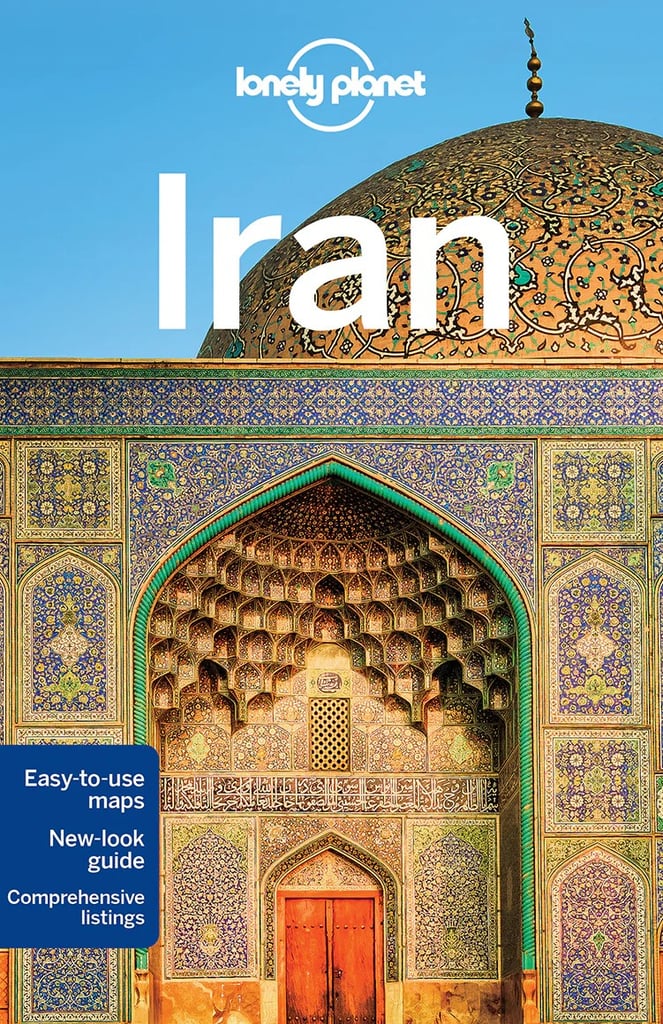
A comprehensive Iran travel guide that covers major cities, historical sites, and local cuisine. Great for practical travel advice and cultural insights.
Iran (Bradt Travel Guide)
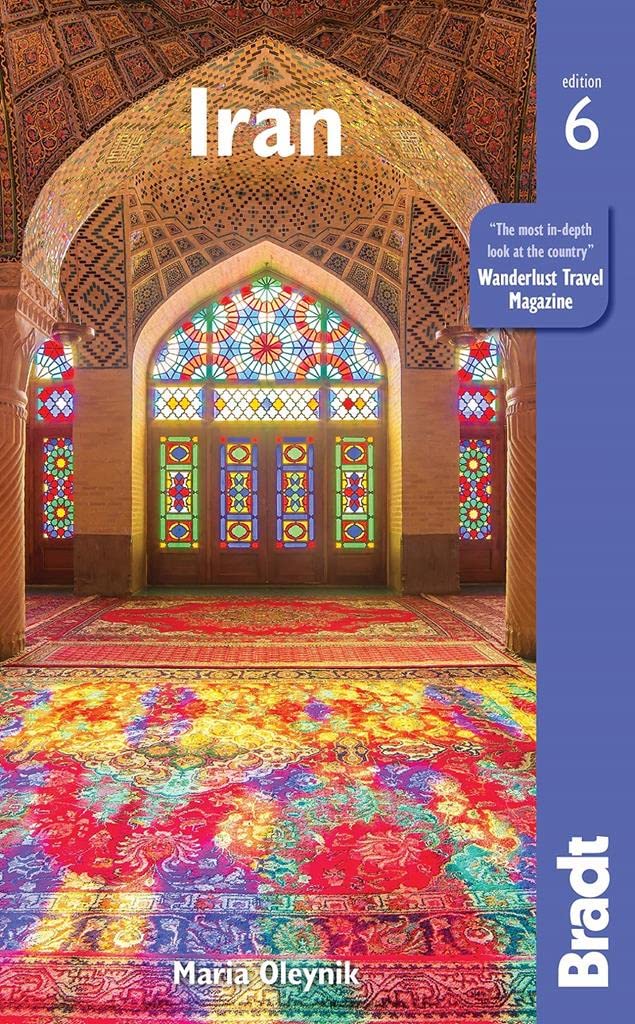
Notable for its emphasis on responsible travel and deeper understanding of Iranian society.
Iran: A Modern History
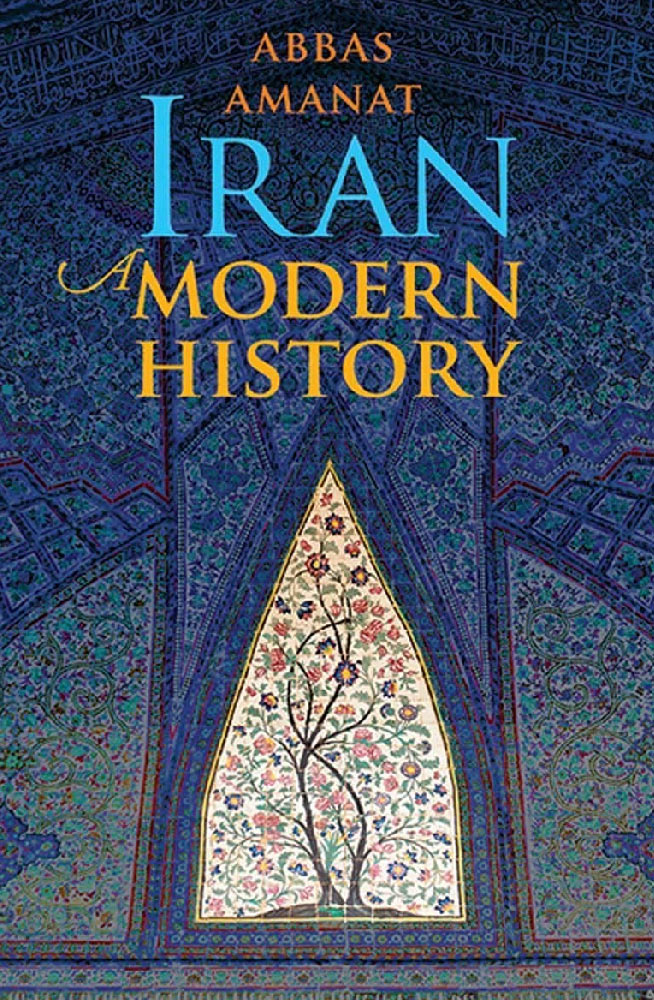
A scholarly work that provides a comprehensive history of Iran from the 16th century to present.
Iran: Empire of the Mind

Highlights Iran’s intellectual and cultural history, offering a balanced perspective on its complex relationship with the West.
These Iran travel guide books are available in hardcover, digital formats, and sometimes as audiobooks. Choose based on your interest and type of information you seek.
Getting There and Around
Exploring Iran begins with a smooth arrival. Navigating airports and entry points is your first step in this adventure. Iran’s main international gateway is Tehran’s Imam Khomeini International Airport. Upon arrival, travelers often notice the efficient layout and helpful signage in multiple languages, making the immigration and customs process straightforward. Other major airports like those in Shiraz, Isfahan, and Mashhad also offer international services, catering to travelers heading directly to these cities.
Book Bus Ticket

Transportation Options
Once in Iran, a multitude of transportation options awaits. Iran boasts an extensive and reliable domestic transportation network. Domestic flights are a time-efficient way to travel between major cities. Airlines like Iran Air and Mahan Air offer frequent flights to numerous destinations, ensuring that even the most remote locations are accessible.
Trains and Buses
For those who prefer to see the Iranian landscape up close, trains and buses offer an excellent alternative. Iran’s rail network connects key cities, offering scenic journeys and comfortable services. Overnight trains are available for longer routes, such as Tehran to Shiraz, providing sleeper options for a restful journey. Buses in Iran are both economical and comfortable, with VIP services offering spacious seats and air conditioning on longer routes.
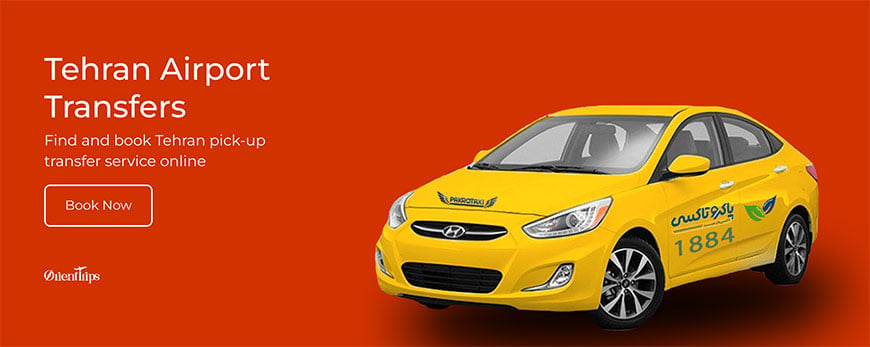
For travelers who crave independence and flexibility, car rentals present an ideal solution. Renting a car in Iran allows you to explore at your own pace and venture off the beaten path. Major cities and airports have reputable car rental agencies with a range of vehicles to suit different needs. When driving in Iran, it’s important to familiarize yourself with local traffic laws and driving culture. Highways are well-maintained, but traffic in urban areas can be bustling, so patience and attention are key.
Navigating Iran’s diverse transport options is an integral part of your travel experience. Whether soaring through the skies, traversing the land by rail or road, or exploring city streets, each mode of transport offers a unique perspective of Iran’s landscapes and daily life. This guide ensures you are well-equipped to choose the best travel options for your journey through this captivating country.
Accommodations and Where to Stay
Tehran Accommodations
Tehran, as the bustling capital of Iran, offers a range of luxurious accommodation options. The Espinas Palace Hotel and Parsian Azadi Hotel are among the top choices, providing guests with top-notch amenities and stunning views of the city. For a closer look at what Tehran has to offer, visit the Tehran Travel Guide.
BOOK ONLINE
Tehran Hotels
Kashan Accommodations
Kashan is famous for its traditional houses turned into boutique hotels. The Morshedi House Boutique Hotel and Saraye Ameriha Boutique Hotel offer a unique glimpse into Iran’s rich architectural heritage, coupled with modern comforts.
Isfahan Accommodations
In Isfahan, the Abbasi Hotel and Atigh Traditional Hotel stand out for their stunning traditional Persian architecture and beautiful gardens, reflecting the city’s artistic flair.
BOOK ONLINE
Isfahan Hotels
Yazd Accommodations
Yazd offers a blend of traditional and modern accommodations. The Dad Hotel, a beautifully restored caravanserai, and the Vali Traditional Hotel provide a cozy, culturally rich experience in the heart of the desert city.
Shiraz Accommodations
Shiraz is known for its luxurious hotels and traditional guesthouses. The Zandiyeh Hotel and Atlas Hotel are excellent choices for those seeking comfort and proximity to historical sites.
BOOK ONLINE
Shiraz Hotels
Tabriz Accommodations
Tabriz offers a range of hotels that are both comfortable and conveniently located. The El-Goli Pars Hotel and Kaya Laleh Park Hotel are among the top choices, offering modern amenities and easy access to the city’s attractions.
Booking Your Stay in Iran
Advance booking is recommended, especially during peak seasons, to ensure availability. Each city in Iran offers a unique accommodation experience, reflecting the rich tapestry of Iranian culture and hospitality. For more hotel options and bookings, visit OrientTrips Hotels.
Culinary Journey Through Iran
Embarking on a culinary journey through Iran is an adventure in itself, revealing the country’s rich history and diverse cultural influences through its cuisine. Iranian food is not only delicious but also tells a story of regional specialties and traditional cooking methods.
Must-Try Dishes and Local Delicacies
Iranian cuisine is a blend of savory and sweet, subtle and bold. Must-try dishes include:
- Kebabs: No visit to Iran is complete without trying various kebabs. From the popular Koobideh (minced meat kebab) to the luxurious Barg (fillet kebab), each has its unique flavor.
- Ghormeh Sabzi: This herb stew, often considered the national dish of Iran, combines fresh herbs, kidney beans, and lamb, served with fragrant basmati rice.
- Fesenjan: A rich and slightly sweet stew made with pomegranate syrup and ground walnuts, typically served with chicken or duck.
- Tahdig: The crispy, golden layer of rice from the bottom of the pot is a much-loved delicacy, often flavored with saffron or accompanied by thin bread or potatoes.
- Ash-e Reshteh: A hearty noodle soup mixed with beans, herbs, and sometimes kashk (a type of whey), perfect for colder days.
Read More: Top 10 Foods You Must Try in Iran
Food Safety and Dietary Considerations
When it comes to food safety, Iran’s restaurants and eateries generally maintain high standards. However, like any travel destination, it’s wise to follow some basic precautions:
- Drink bottled water and avoid tap water.
- Eat at busy restaurants where food turnover is high, ensuring freshness.
- Wash and peel fruits and vegetables if you’re consuming them raw.
For those with dietary considerations, vegetarian and vegan options may be less common but are available, especially in larger cities. Dishes like Mirza Ghassemi (eggplant dip) and various salads can cater to these diets. It’s also advisable to communicate dietary restrictions to your hosts or servers.
Best Dining Experiences in Major Cities
Iran’s major cities offer a blend of traditional and contemporary dining experiences:
- In Tehran, upscale restaurants like Shandiz Mashhad offer sumptuous Persian cuisine, while Tehran’s café culture, exemplified by Café Tehroon, presents a modern twist on traditional flavors.
- Isfahan‘s culinary scene is as rich as its architecture. Restaurants like Shahrzad offer a traditional ambiance with classic Persian dishes.
- Shiraz is known for its sweet treats and desserts. The traditional Vakil Bazaar is a great place to sample local specialties like Faludeh, a frozen sorbet with rosewater.
- Yazd, famous for its confectioneries, offers unique sweets like Pashmak (Iranian cotton candy) and Baklava.
Exploring Iran’s culinary landscape is an integral part of the travel experience. Each dish you taste tells a part of Iran’s story, making your journey through this land an unforgettable gastronomic adventure.
Top Destinations and Attractions
Iran, a country steeped in history and culture, offers an array of awe-inspiring destinations and attractions. From UNESCO World Heritage Sites to hidden gems, this land is a treasure trove for travelers.
Exploring Iran’s UNESCO World Heritage Sites
Iran is home to numerous UNESCO World Heritage Sites, each representing a piece of the country’s rich historical and cultural fabric. Notable sites include:
- Persepolis: The ancient ceremonial capital of the Achaemenid Empire, showcasing magnificent ruins and intricate bas-reliefs.
- Golestan Palace: Located in Tehran, this palace complex is a masterpiece of the Qajar era, featuring beautiful gardens and elegant buildings.
- Meidan Emam, Isfahan: Known as Naqsh-e Jahan Square, this site is one of the largest city squares in the world, surrounded by architectural wonders like the Shah Mosque and Ali Qapu Palace.
- Bam and its Cultural Landscape: The ancient city of Bam, with its impressive citadel, offers insights into the use of mud layers in construction.
- Yazd: The historic city of Yazd is recognized for its traditional Persian architecture, wind towers, and unique water irrigation system.
Hidden Gems and Off-the-Beaten-Path Locations
Venturing beyond the well-known sites, Iran is filled with hidden gems that offer a glimpse into its diverse landscapes and local cultures:
- Tabriz Historic Bazaar Complex: A maze of bustling alleys and shops, perfect for experiencing local life and craftsmanship.
- Badab-e Surt: These natural terraced hot springs in northern Iran are known for their stunning hues and mineral-rich waters.
- Qeshm Island: Boasting unique geological formations like the Stars Valley and beautiful beaches, it’s an ideal spot for nature lovers.
- Masuleh: This picturesque village near the Caspian Sea is famous for its terraced architecture and lush surroundings.
City Guides: Tehran, Isfahan, Shiraz, and More
Each Iranian city has its own character and charm, rich in history and culture.
- Tehran: The vibrant capital, where tradition meets modernity. Key attractions include the National Jewelry Museum and the bustling Tajrish Bazaar.
- Isfahan: Often described as a ‘living museum,’ Isfahan captivates with its stunning Islamic architecture and the famous Si-o-Se-Pol Bridge.
- Shiraz: Known as the city of poets, literature, and gardens, Shiraz is the gateway to Persepolis and home to the serene Eram Garden.
- Yazd: A desert city, Yazd is famous for its windcatchers, Zoroastrian fire temples, and the ancient Jameh Mosque.
For more detailed information on each city, including the best places to visit, where to eat, and unique experiences, check out the SURFIRAN City Guides. These guides provide invaluable insights and tips to help you make the most of your visit to each city.
Exploring the top destinations and attractions in Iran is a journey through a land of extraordinary beauty and rich history. From the bustling streets of Tehran to the tranquil gardens of Shiraz, each location offers a unique experience, ensuring your trip to Iran is full of memorable moments.
Staying Connected: Navigating Connectivity in Iran
In today’s digital age, staying connected while traveling is essential. In Iran, you’ll find various options to ensure you remain connected, whether it’s for navigating maps, sharing experiences, or staying in touch with loved ones. Here’s a guide on Internet accessibility and SIM card options, along with some useful apps and digital tools to enhance your travel experience in Iran.
Internet Accessibility and SIM Card Options
Internet access in Iran is fairly widespread, with many hotels, cafes, and restaurants offering Wi-Fi. However, the connection speed and reliability can vary, especially in more remote areas.
For uninterrupted and on-the-go internet access, obtaining a local SIM card is a practical choice. This not only provides you with internet access but also allows for local calls and texts, which can be invaluable for bookings and communication within Iran.
OrientTrips offers SIM card options tailored for tourists. These SIM cards are convenient to obtain and can be pre-ordered or purchased upon arrival at major airports. They offer various data packages to suit different needs, from light browsing to heavy data usage. For more information and to choose the best SIM card for your travel needs, visit OrientTrips SIM Card.
Useful Apps and Digital Tools for Travelers in Iran
Several apps and digital tools can make your journey in Iran smoother and more enjoyable:
- Google Maps: For navigation and finding points of interest. Offline maps can be useful in areas with limited internet access.
- Snapp: Iran’s answer to Uber, this app offers reliable and affordable taxi services in major cities.
- Foursquare or TripAdvisor: Great for restaurant reviews and finding hidden gems for dining and sightseeing.
- WhatsApp and Telegram: Widely used messaging apps in Iran for communication.
- VPN Services: Some websites and services may be restricted in Iran. Using a VPN service can help bypass these restrictions.
- Currency Converter Apps: Useful for quick conversions between your home currency and the Iranian Rial.
Remember to download and set up these apps before your trip, as access to app stores can sometimes be limited within Iran.
Staying connected in Iran is straightforward with the right preparations. A local SIM card coupled with these useful apps will ensure you stay informed, connected, and ready to explore all that Iran has to offer.
Health, Safety, and Emergency Information
Traveling in Iran, like any international destination, calls for awareness of health and safety practices, knowledge of medical services and insurance options, and familiarity with emergency contacts. This guide provides essential information to help you stay safe and secure during your travels in Iran.
OrientTrips
Travel Insurance
Medical Services and Insurance
Iran offers a range of medical services, from public hospitals to private clinics. Medical facilities in major cities like Tehran, Isfahan, and Shiraz are well-equipped and staffed with skilled healthcare professionals. In smaller towns and rural areas, however, medical facilities may be more basic.
For peace of mind, it’s advisable to have comprehensive travel insurance that covers medical expenses. OrientTrips offers specialized travel insurance for visitors to Iran, ensuring that you are covered for any medical emergencies or health-related issues during your stay. This insurance can include coverage for hospitalization, emergency medical evacuation, and other critical medical services. For more details and to select a suitable insurance plan, visit OrientTrips Insurance.
Health Tips
- Vaccinations: Check with your healthcare provider for recommended vaccinations before traveling.
- Hydration: Stay hydrated, especially when traveling in Iran’s desert areas. Always opt for bottled water.
- Food Safety: Eat at reputable establishments and avoid raw or undercooked food to prevent foodborne illnesses.
- Sun Protection: Use sunscreen, sunglasses, and hats to protect yourself from the sun, particularly in the summer months.
Safety Precautions
Iran is generally a safe destination for travelers, with low crime rates. However, it’s always wise to take standard safety precautions:
- Be Aware of Local Laws and Customs: Familiarize yourself with Iranian laws, customs, and dress codes to ensure respectful and trouble-free travel.
- Valuables: Keep your valuables secure and be cautious in crowded areas to avoid pickpocketing.
- Travel Documents: Keep copies of important travel documents like passports and insurance in a safe place.
Emergency Contacts and Consular Assistance
In case of an emergency, it’s important to know whom to contact:
- Local Emergency Services: For immediate assistance, dial 110 for police, 115 for ambulance, and 125 for the fire department.
- Your Country’s Embassy or Consulate: Keep contact details of your embassy or consulate in Iran handy for any consular assistance or in case of legal emergencies.
- Insurance Provider: If you have travel insurance, keep your provider’s emergency contact number accessible.
Preparation and awareness are key to ensuring a safe and enjoyable trip to Iran. By taking note of these health, safety, and emergency guidelines, you can focus on experiencing the rich culture and beauty of Iran with peace of mind.
Read More
Conclusion and Further Resources: Your Guide to a Memorable Iranian Adventure
As we conclude this comprehensive guide, “Iran Travel Tips & Advice,” let’s recap the key takeaways and provide additional resources to enhance your journey. This guide aimed to equip you with valuable insights and practical information, ensuring a smooth and enriching travel experience in Iran.
Summary of Key Takeaways
- Preparation is Key: From obtaining the right travel documents to understanding cultural norms, preparing for your trip will enhance your experience in Iran.
- Diverse Accommodations: Whether opting for luxury hotels, traditional guesthouses, or historic houses, Iran offers a range of stays to suit every preference.
- Culinary Delights: Iranian cuisine, with its array of flavors and dishes, is an integral part of the cultural experience.
- Rich Cultural Heritage: Exploring Iran’s UNESCO World Heritage Sites and hidden gems reveals the country’s historical and architectural splendor.
- Connectivity Made Easy: With options like OrientTrips SIM cards, staying connected in Iran is hassle-free.
- Safety and Health: Knowing about health services, safety tips, and emergency contacts ensures peace of mind during your travels.
Additional Reading and Travel Resources
For those keen to delve deeper, several resources can enrich your understanding and preparation for a trip to Iran:
- Travel Blogs and Books: Look for travel blogs and books that focus on Iran to gain personal insights and tips from fellow travelers.
- Cultural Guides: Understanding Iran’s history and culture can significantly enhance your travel experience.
- Language Resources: Learning basic Farsi phrases can be both fun and useful for everyday interactions.
Tailor-Made Tours and Travel Services
For a truly personalized experience, consider SURFIRAN’s Tailor-Made Tours. These tours are customized to your interests and preferences, ensuring that you see and experience Iran in a way that aligns with your travel goals. From historical tours to adventure travel, SURFIRAN offers a range of options. Discover more and begin planning your bespoke Iranian journey at SURFIRAN Tailor-Made Tours.
In summary, traveling to Iran promises an adventure filled with discovery, cultural richness, and unforgettable experiences. This guide is your starting point to a journey that will lead you through the heart of Iran, a land of hospitality, history, and beauty. Safe travels and enjoy your exploration of Iran!
